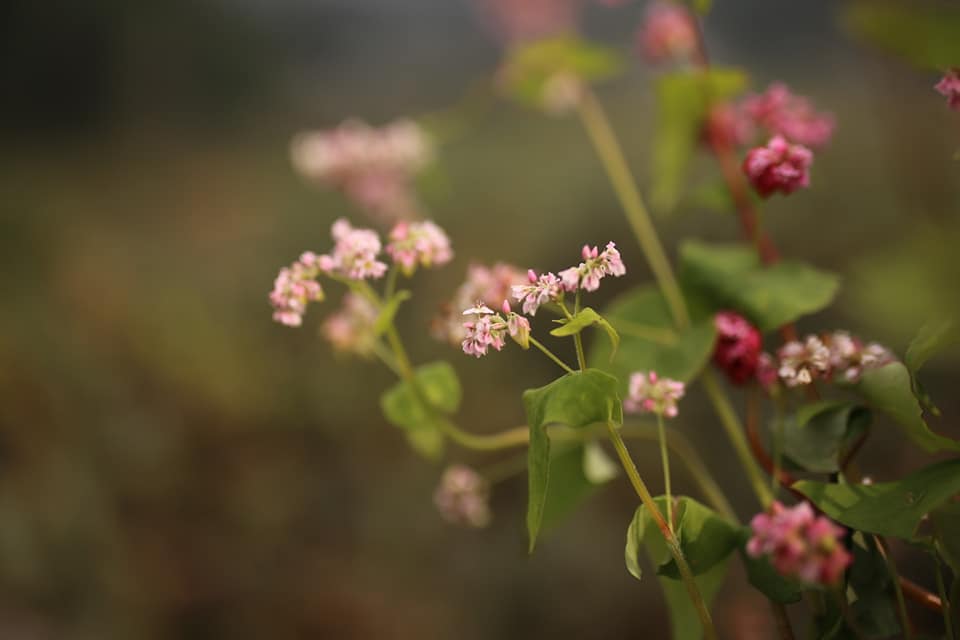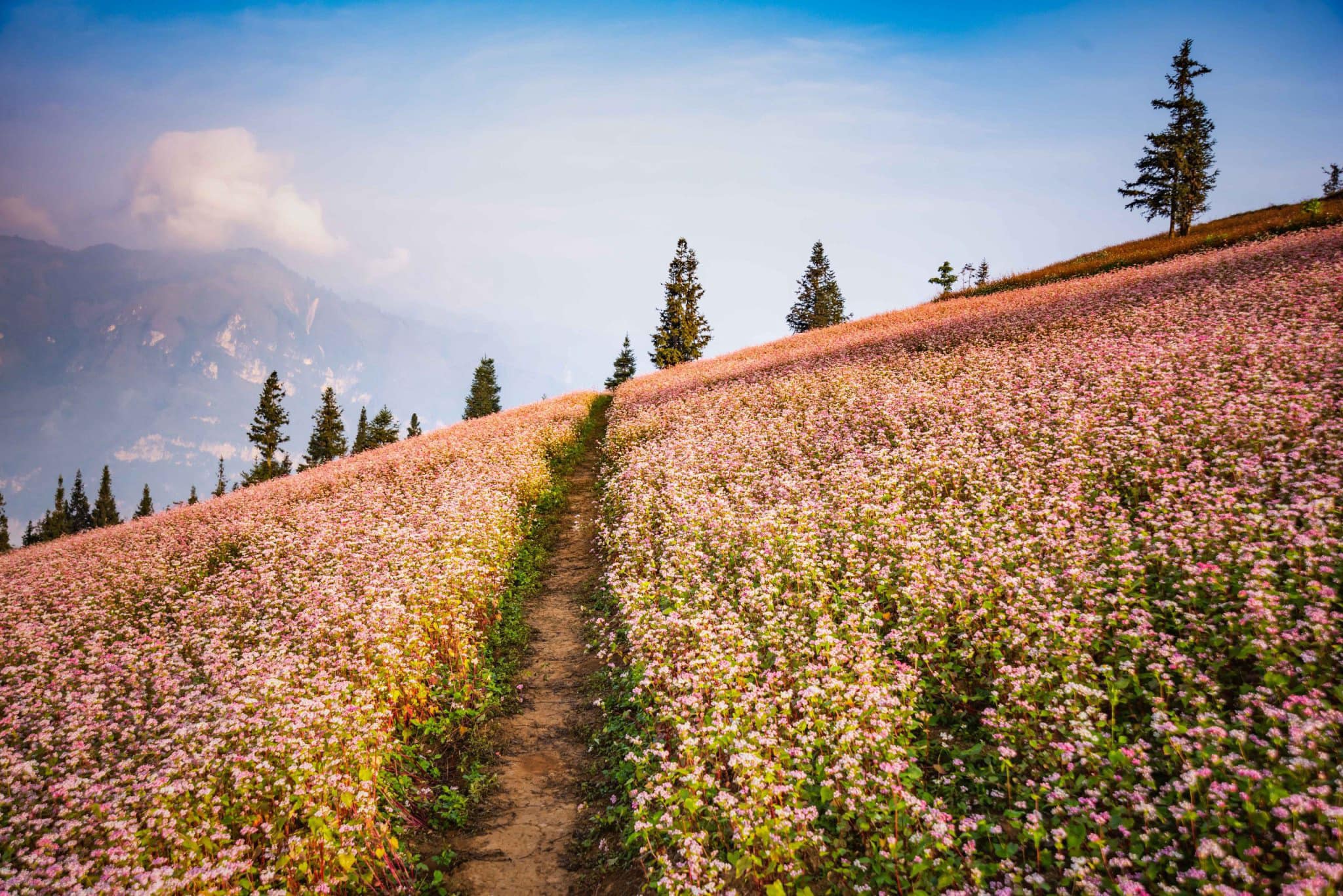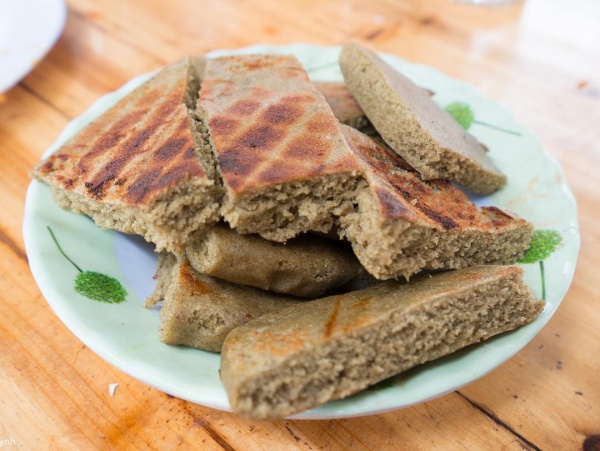X
It is said that this tiny flower forest with green leaves once saved a whole village from a severe famine that occurred when the old harvest season had been over way before the new one had arrived.
According to the legend, in the past, the people in the Northern mountainous region lived mainly on rice and corn. One year, the food ran out and the land had become barren, and the local people had to wander in search of food. Then, a strange yet pleasant fragrance filled the atmosphere and attracted the peasants to follow the ravine. Among the rocks, they discovered small white pink flowers whose nuts tasted as subtle as rice and corn. Since then, the Hmong have used the buckwheat flowers’ nuts as staples like maize and rice. The buckwheat flower then became an essential part of their daily lives.

The ideal time to admire the buckwheat flowers is from October to November, as this is when they are in full bloom. Additionally, during April and May, another type of flower blossoms, with a white hue, so you can also visit during this time.
They say that buckwheat blossoms, or “chez” as known by the H’mong (a local hill tribe of the North), are the specialty of the northernmost land, because every year, just when the first monsoon starts blowing, these tiny white flowers simultaneously flourish, flooding the whole plateau.
There are two types of buckwheat flowers. In areas of Cao Bang, you can find the white type. Meanwhile, in Bac Ha, people often plant the purple buckwheat flower. Simple but loveable, modest but charming, buckwheat is harmonious with the green color of the forest and the grey color of the mountains which altogether creates an endless source of inspiration for art enthusiasts. But the most profound and beautiful feature of the flower is its meaning – slender in shape but full of energy and beauty, always overcoming the fierce challenges of nature. As autumn reaches its end, the flowers become more splendid and attractive. With time, they will start to change color from white to purple pink, and finally dark red.

When talking about buckwheat, people will immediately think of the beautiful pink-purple flower color, something that makes people plan their schedules every November. But buckwheat is not only for viewing flowers, in fact, this plant is also used as food such as vegetables or flower seeds, after being picked and dried, can be ground into powder to make cakes.
After every flowering season, people here harvest buckwheat seeds to dry and grind into flour to make cakes. This type of seed is very small, only half the size of a black bean, but contains a lot of nutritional value. And because it is grown in a natural environment, buckwheat in Bac Ha is not affected by toxic chemicals.

Going to the Bac Ha market, you will see many ethnic women in floral flared dresses sitting next to a hot coal stove with stacks of multi-colored cakes, of which yellow is corn flour cake, white is Sticky corn cake, light purple with dark purple dots emerging is buckwheat cake.
When young, the buckwheat stems are picked by the local people and processed into boiled dishes to eat as a vegetable dish in daily meals. When you eat it, you will feel the taste is unpleasant, but once you get used to it, you will taste the flavor of the Bac Ha highland.
In addition, flour ground from buckwheat seeds can also be processed into delicious porridge suitable for enjoying in the cold air of the Bac Ha highlands. And more specifically, people also use the fruit of this tree to make food. processed into a particularly delicious wine with the typical flavor of the highlands.

According to the experience of local people, buckwheat leaves are effective in treating diseases. If eaten regularly, it will brighten the eyes and ears, and people use buckwheat stems and leaves to make medicine to treat diseases such as stomach diseases, rectal cancer, constipation, blood pressure, and people with hyperlipidemia. , blood sugar,…
With the gentle and vibrant beauty, the buckwheat flowers bring to the highlands a natural and attractive beauty that attracts many tourists to Bac Ha. Besides, the buckwheat flowers also have many uses. It is excellent as food, has medicinal uses, is processed into precious wine, etc. Therefore, Tam Giac Mach has become a familiar and close image to local people and indigenous ethnic groups living in the highland mountains. and increasingly closer to domestic and foreign tourists.
Thanh Nhan










%20v%e1%bb%9bi%20Trung%20Qu%e1%bb%91c/dao-bac-ha_636931637798307905.jpg)








